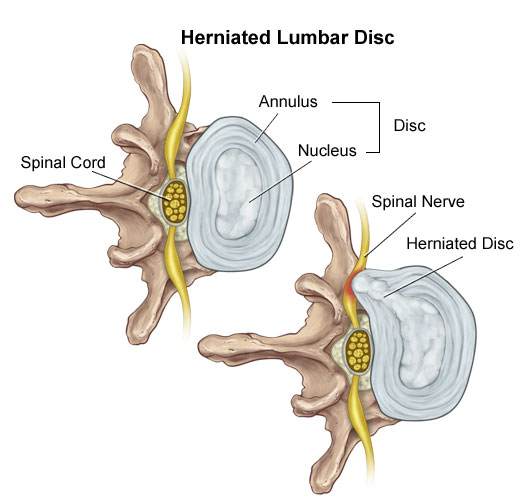Many are suffering from back pain brought on by disc bulges. Conditions like superimposed central protrusions disc bulges, disc bulges which touch nerve roots, eccentric disc bulges, and paracentral bulges can all cause significant mobility issues and pain. Understanding these conditions and exploring efficient treatment options is vital for reducing pain and improving the quality of life. Dr. Ken Nakamura, a top chiropractor, provides insights into these conditions and offers guidance on how to treat them effectively.

What is the What is the Bulge (or the Disc Bulge)?
The intervertebral disk which acts as a cushion in between the vertebrae extends past its normal boundaries, then a disc bulge may result. It can be caused by wear and tear, an accident or gradually degeneration. The amount of disc bulges vary from small protrusions that have minimal or no signs, to more severe bulges which can cause pain and discomfort.
Superimposed Central Protrusion of Disc
A superimposed central disc protrusion is a particular type of disc bulge that occurs in the spinal canal’s central region. According to Dr. Ken Nakamura this protrusion could cause compression to the spinal cord and nerve roots, which can cause symptoms such as numbness or pain. It’s challenging to treat this issue due to its central position and the possibility for it to affect both the left and right sides of the body.
Disc Bulge Abutting Nerve Root Treatment
When a disc bulge touches a nerve root, it can cause significant neurologic symptoms and pain, such as sciatica. Sciatica is pain which radiates down your leg. In the absence of treatment, pressure on the nerve root of the spine might result in inflammation, pain and even function loss.
Dr. Nakamura explains how disc bulges located adjacent to nerve roots are addressed by a combination of conservative and, sometimes interventional techniques. Physical therapy, anti-inflammatory medications and modifications to exercises can be employed as treatments for reducing pressure on affected nerves. In more severe instances surgery or epidural steroids injections may be required to ease the pressure and offer relief.
Eccentric Bulge on Disc
An eccentric disc bulge refers to a bulge that is off-center, usually to one side of the spinal canal. This type of bulge can cause unilateral symptoms, meaning that pain, as well as other symptoms are generally noticed on one side the body. The bulges of the discs that are eccentric can be problematic, as they can cause tingling, pain or weakness in an location.
Dr. Nakamura emphasizes the fact that the treatment of an irregular disc bulge involves physical therapy that strengthens the muscles that surround your spine, and helps improve flexibility. This will decrease disc pressure and help relieve symptoms. In some instances treatment options that are not surgical, like spinal decompression therapy may be recommended to minimize the bulge as well as relieve the compression of the nerve.
Paracentral Protrusion
Paracentral protrusions can be described as a disc bulge, which is found in the spinal canal close to the center but to the side. It can result in nerve root compression, similar to other forms of disc bulges, and could cause symptoms like discomfort, numbness or weakness in the limbs.
Dr. Nakamura advises that treatment for paracentral protrusion often involves a combination of conservative therapies that include physical therapy, pain management strategies, and lifestyle modifications. In the most severe cases of paracentral protrusion surgery is usually required to eliminate the disc material that has protruded and also decompresses the nerve.
Treatment of disc bulge-related pain
The treatment for disc bulge pain is contingent on the severity and specific symptoms of the problem. In mild-to-moderate cases, conservative treatment is often effective at reducing pain while increasing function. They include:
Physical Therapy: Customized exercises to strengthen the muscles supporting the spine, increase flexibility, and decrease pressure on discs that are affected.
Pain Management: Employs medication like anti-inflammatories to control inflammation, relieve pain and ease muscle tension.
Lifestyle Modifications – Adjustments to daily activities that will not cause more discomfort for the patient. Examples include correct posture, ergonomic adjustments, avoiding excessive lifting, etc.
Interventional Therapies: In situations where conventional treatments aren’t enough, options such as epidural steroid injections, or less invasive surgical procedures might be considered.
Conclusion
Effective pain management requires you know the nuances of certain conditions like superimposed central disk protrusion and bulge disc that abuts the nerve root, an eccentric bulge disc, and paracentral bulge. Dr. Ken Nakamura emphasizes that it is essential to spot the symptoms, seek proper treatment, and improve overall quality-of-life. Management of disc bulges is crucial to live a pain-free and comfortable life by using conservative methods, or in some cases surgical intervention.